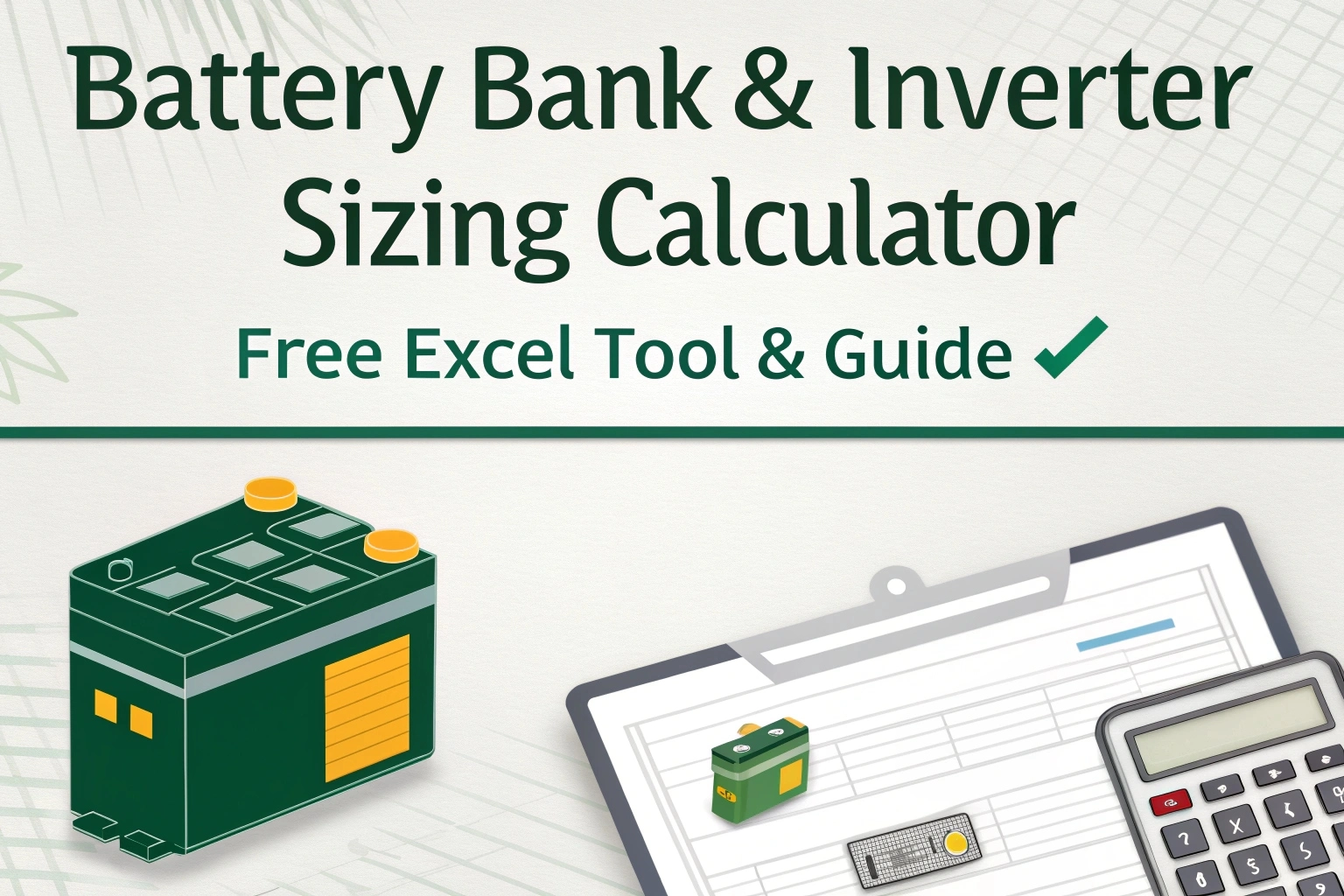Battery Bank & Inverter Sizing Calculator: Sizing battery bank and inverter is technique which is used to by peoples to make their solar system and backup power systems work properly. they obtains their battery bank and inverter size using multiple techniques one of the most common technique is using calculator , Excel Sheets , and Formulas. they Use their load profile info to make calculations on the sites like excel etc. this is very important for off-grid systems and still its very difficult to do.
Why Proper Sizing Matters
- System Reliability: Ensures your inverter can handle peak loads and your batteries supply energy through periods of low generation or grid outage.
- Longevity: Prevents excessive depth-of-discharge that shortens battery life.
- Cost-Effectiveness: Avoids oversizing equipment, which increases upfront costs, and undersizing, which leads to failures.
- Energy Efficiency: Matches component capacities to actual consumption for optimal performance.
Key Inputs & Calculations
- Daily Load (Wh/day): Sum the watt-hours of all appliances you’ll power.
- Autonomy (hours or days): Number of hours or days the system must run without charging.
- Battery Voltage (V): System nominal voltage—12 V, 24 V, or 48 V.
- Depth of Discharge (%): Maximum allowable discharge, typically 50% for lead-acid or up to 80% for Li-ion.
- Inverter Efficiency (%): Factor in conversion losses (usually 90–95%).
Battery Capacity (Ah)
Ah=Wh/day× Autonomy Battery Voltage×(DoD/100)\text{Ah} = \frac{\text{Wh/day} \times \text{Autonomy}}{\text{Battery Voltage} \times (\text{DoD}/100)}
Inverter Rating (W)
Inverter Size=Total Peak Load (W)Inverter Efficiency\text{Inverter Size} = \frac{\text{Total Peak Load (W)}}{\text{Inverter Efficiency}}
Battery Bank & Inverter Sizing Calculator: Features
- Automated Worksheets: Separate tabs for load entry, battery sizing, and inverter sizing.
- Unit Flexibility: Enter loads in watts or kilowatts, and times in hours or days.
- Real-Time Results: Instant calculation of battery bank size (Ah) and inverter capacity (W).
- Safety Margin: Optional buffer percentage to accommodate unexpected surges.
- Printable Report: Generates a summary sheet for design documentation and procurement.
Battery Bank & Inverter Sizing Calculator: How to Use
- Download & Open: Enable editing in Excel.
- Enter Your Load Data: On the Loads tab, list each device, its power draw, and daily run time.
- Configure System Parameters: On the Sizing tab, input autonomy, voltage, DoD, and efficiency.
- Review Results: View calculated battery bank capacity and inverter rating on the Results tab.
- Export & Present: Use the Summary sheet to print or export a PDF specification for your project files.











